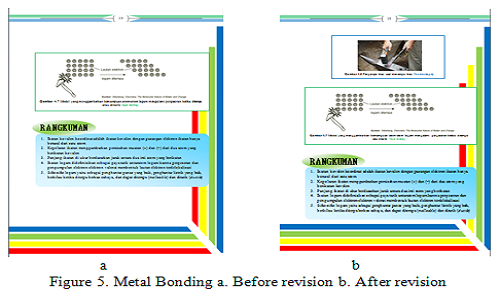
Development of Chemical Bonding Module Based on Multiple Representation
Abstract
Keywords
Full Text:
PDFReferences
Arikunto, S. (2021). Dasar-Dasar Evaluasi Pendidikan Edisi 3. Bumi Aksara.
Chandrasegaran, A. L., Treagust, D. F., & Mocerino, M. (2007). The development of a two-tier multiple-choice diagnostic instrument for evaluating secondary school students’ ability to describe and explain chemical reactions using multiple levels of representation. Chemistry Education Research and Practice, 8(3), 293-307.
Dick, W., Carey, L., & Carey, J.O. (2016). The Systematic Design Of Introction (the 8 Edition). New York: Longman
Djamarah, S.B dan Zain, A. (2013). Strategi Belajar Mengajar. Jakarta: PT. Rineka Cipta.
Gkitzia, V., Salta, K., & Tzougraki, C. (2011). Development and application of suitable criteria for the evaluation of chemical representations in school textbooks. Chemistry Education Research and Practice, 12(1), 5-14.
Jansoon, N., Coll, R. K., & Somsook, E. (2009). Understanding Mental Models of Dilution in Thai Students. International Journal of Environmental and Science Education, 4(2), 147-168.
Julia, D., Rosilawati, I., & Efkar, T. (2016). Pengembangan modul berbasis multipel representasi pada materi garam hidrolisis. Jurnal Pendidikan dan Pembelajaran Kimia, 5(3).
Kebudayaan, K. P. D. (2016). Silabus Mata Pelajaran Sekolah Menengah Atas/Madrasah Aliyah/Sekolah Menengah Kejuruan/Madrasah Aliyah Kejuruan (SMA/MA/SMK/MAK). Kementrian Pendidikan dan Kebudayaan.
Khasyyatillah, I., & Osman, K. (2019). The development of CT-S learning module on the linear motion topic to promote computational thinking. Journal of Educational Sciences, 3(3), 270-280.
Lin, J. W., & Chiu, M. H. (2007). Exploring the characteristics and diverse sources of students’ mental models of acids and bases. International Journal of Science Education, 29(6), 771-803.
Jannah, M., Copriady, J., & Rasmiwetti, R. (2019). Development of Interactive Learning Media using Autoplay Media Studio 8 for Colloidal Chemistry Material. Journal of Educational Sciences, 3(1), 132-144.
Morrison, G. R., Ross, S. J., Morrison, J. R., & Kalman, H. K. (2019). Designing effective instruction. John Wiley & Sons..
Nana Sudjana. (2014). Penilaian Hasil Proses Belajar Mengajar. Bandung: Remaja Rosdakarya.
Nufus, H., Susilawati, S., & Linda, R. (2020). Implementation of e-module stoiciometry based on kvisoft flipbook maker for increasing understanding study learning concepts of class X senior high school. Journal of Educational Sciences, 4(2), 261-272.
Nyachwaya, J. M., & Wood, N. B. (2014). Evaluation of chemical representations in physical chemistry textbooks. Chemistry Education Research and Practice, 15(4), 720-728.
Riduwan. (2012). Skala Pengukuran Variabel-Variabel Penelitian. Bandung: Alfabeta.
Rosalina, Y., Yustina, Y., & Suzanti, F. (2021). Constructivism-Based Learning Module for Middle School Students' Creative Thinking on the Interaction of Living Things and Their Environments. Journal of Educational Sciences, 5(4), 687-701.
Suparman, M. Atwi. (2012). Desain Instruksional Modern. Jakarta: Erlangga.
Tawil, M & Liliasari. (2014). Keterampilan-Keterampilan Sains dan Implementasi dalam Pembelajaran IPA. Makassar: Badan Penerbit Universitas Negeri Makassar.
DOI: http://dx.doi.org/10.31258/jes.6.2.p.263-274
Refbacks
- There are currently no refbacks.
Copyright (c) 2022 Auzan Qashdi

This work is licensed under a Creative Commons Attribution 4.0 International License.
Publisher: FKIP Universitas Riau












